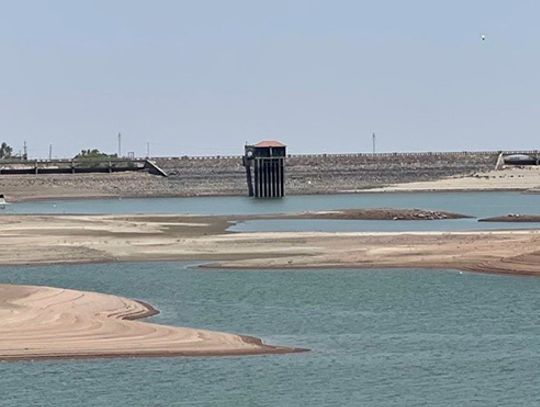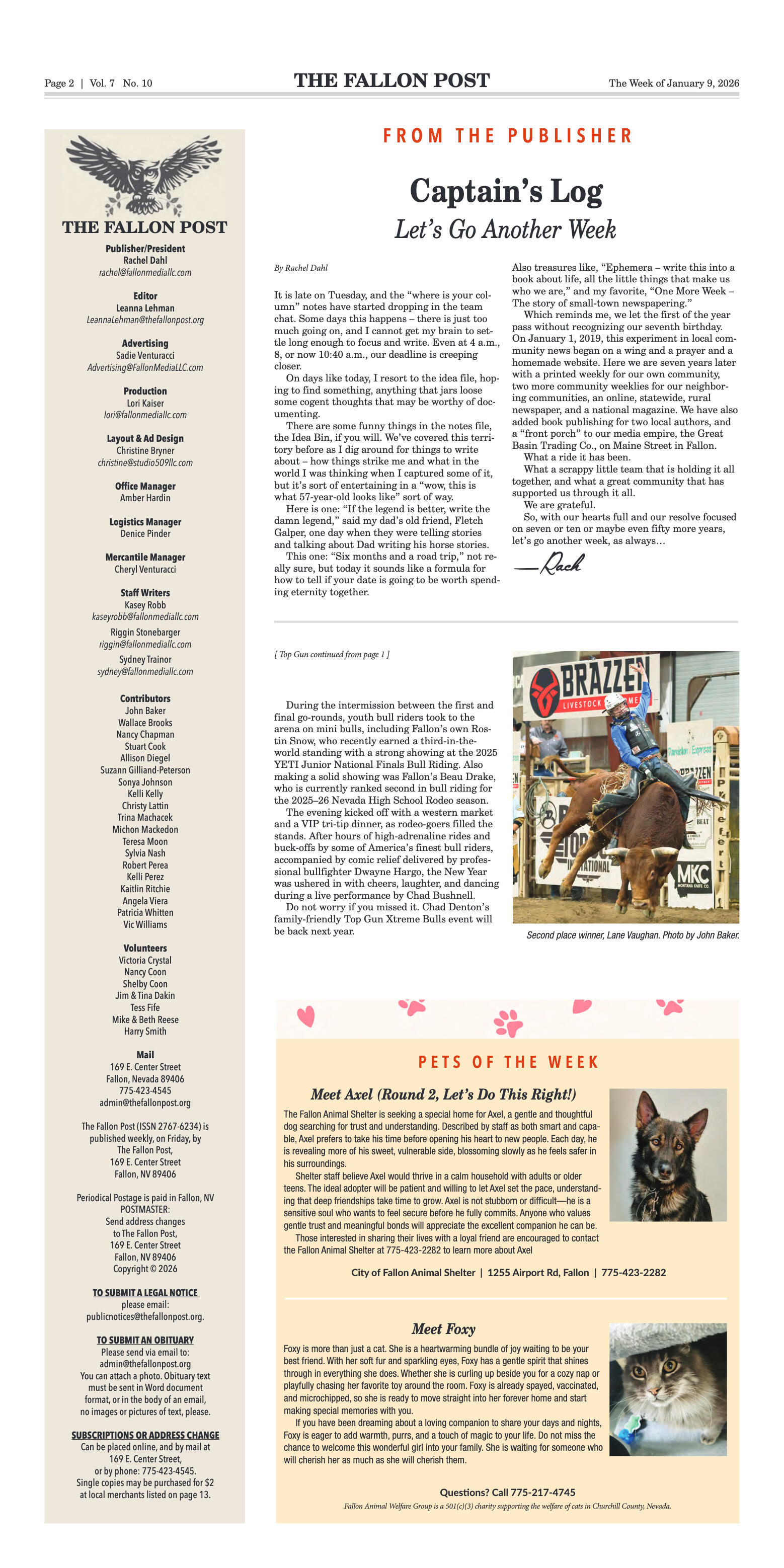Ed James, General Manager of the Carson Water Subconservancy District, has been making the rounds of the communities up and down the Carson River. He’s reporting to local governments what he and his staff have found during their Water Marketing Study and “looking at the sustainability of the watershed.”
In recent presentations to the Churchill County Commission and the Truckee Carson Irrigation District, James explained the study was funded by a grant from the Bureau of Reclamation and matched with funding from CWSD in order to “develop water marketing strategies that establish or expand water markets or water marketing activities between willing participants, in compliance with state and federal laws.”
James said that his strategies through the study were to understand the watershed trends, get a good understanding of all existing water users through the Carson River system, define existing water marketing activities, and consider other possible strategies that may help meet future growth throughout the system.
CWSD considered the long-term trends of water supply in the river from 1940 to 2018, analyzing both the East and West Fork of the river, as well as the gauge at Fort Churchill. James said, generally, the flows in the West Fork have declined 7.9% since 1940, while the East Fork is 4% lower, and the Fort Churchill gauge shows a 3.74% reduction. The numbers include a margin of error of ± 5%, depending on conditions and gauge accuracy.
The study area included groundwater basins in the Carson Valley, Eagle Valley, Dayton, Churchill Valley, which is Silver Springs, and the Carson Desert which encompasses the Fallon community.
“We’re seeing trends through the system that are consistent with earlier work that was done by DRI (Desert Research Institute),” said James. And he said those “trends are troubling.”
The system fluctuates between extremes in “feast or famine” conditions, from high water, flood years to dry, drought years, and a slowly decreasing flow trend. With the lack of storage in the upper watershed, there is no ability to stabilize or mitigate the extremes.
James said the study looked at the challenges throughout the system and how to have a sustainable water supply for the future. Currently, the major uses in the system include irrigation, domestic use through wells, and municipal services, with a slow shift upstream in the Carson Valley and Lyon County primarily, from agriculture to municipal uses. Additionally, there is water for the fish hatchery in the Carson Valley.
The State Engineer, based on Nevada water law, uses perennial yield to allocate water, which is the amount of groundwater that can be withdrawn from a groundwater basin over a period of time without exceeding the long-term recharge of the basin. James said, “I don’t think the perennial yield is very appropriate for this watershed.” He explained in the Carson Desert the perennial yield is about 1,600-acre-feet, but there is pumping of over 16,000-acre-feet. “So, just looking at those numbers you would think there is over groundwater pumping. The water table should be dropping, but that’s not the case, the main reason is you have all this agriculture, the agriculture recharges your aquifer so that’s a new source of water coming in.” He said the aquifer is pretty stable because of that.
“If you were to lose your agriculture, you could be in a world of hurt,” he said. “That’s one reason Churchill County really promotes and protects the ag in the community because you really understand that critical element.”
James explained that in the Churchill Valley basin where Silver Springs is located, the perennial yield is 2,500-acre-feet and that much is being used by domestic wells. While the community there talks about paper water rights on the books, there is very little wet water for future growth.
Current strategies to manage the Carson River system, according to James, include possible changes in points of diversion, place of use, manner of use, and rotation, which are all allowed under the current state water laws. James is also suggesting the idea of regionalizing municipal water systems and using interties (interconnection permitting passage of current between two or more electric utility systems). Along with the reuse of wastewater, aquifer storage, and recovery, there are many possible solutions to meeting future needs of the system. The water import schemes from the Truckee Canal and the Marlette water system also continue to be discussed.
James added to the discussion the variable of the new growth and development taking place in Storey County, saying “there is a new twist with the possibility of Innovation Zones bringing 30-40,000 people. Where are they going to get the water?” James is watching the legislative subcommittee that was appointed by Governor Sisolak to study the concept of the Innovation Zones during the interim session. “If this committee needs water, we want to know about it,” he said. He said there is great concern that developers of that project are looking to the Carson system and the Truckee for water supplies. “Apparently, they have bought water from Gerlach, but how do they get it here?”
Now that the water marketing study has been completed the next steps for CWSD are to work toward a regional water management plan. They had applied to BOR for a grant to develop that plan but were not successful. So, for now, there’s the addition of searching for funds as well as searching for a solution to the ever-present need for more water to meet the needs of a changing Northern Nevada.









































Comment
Comments